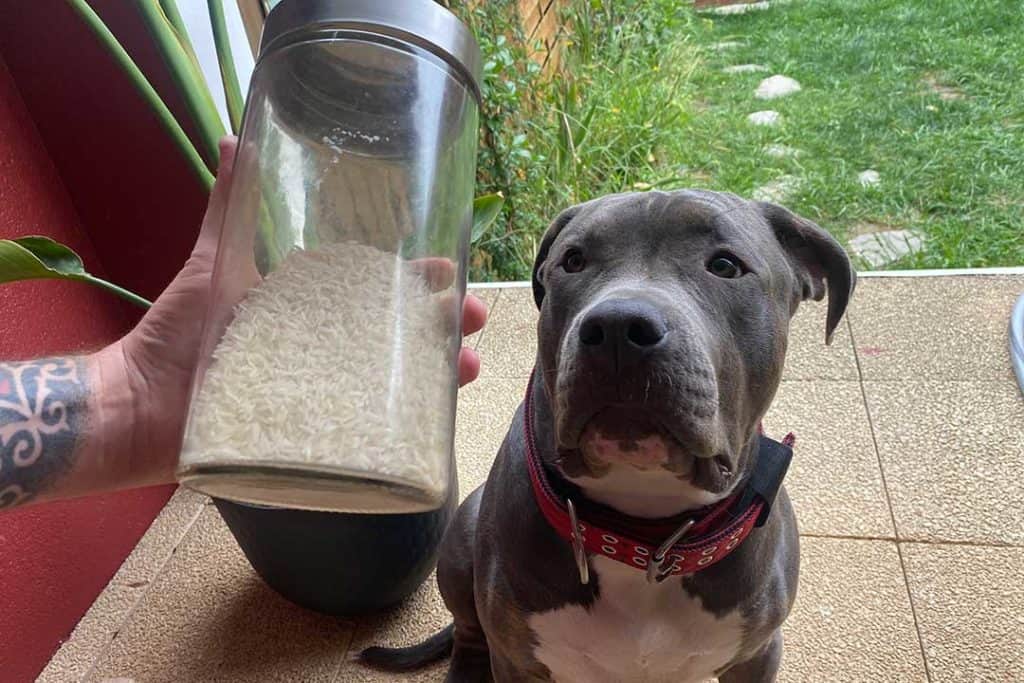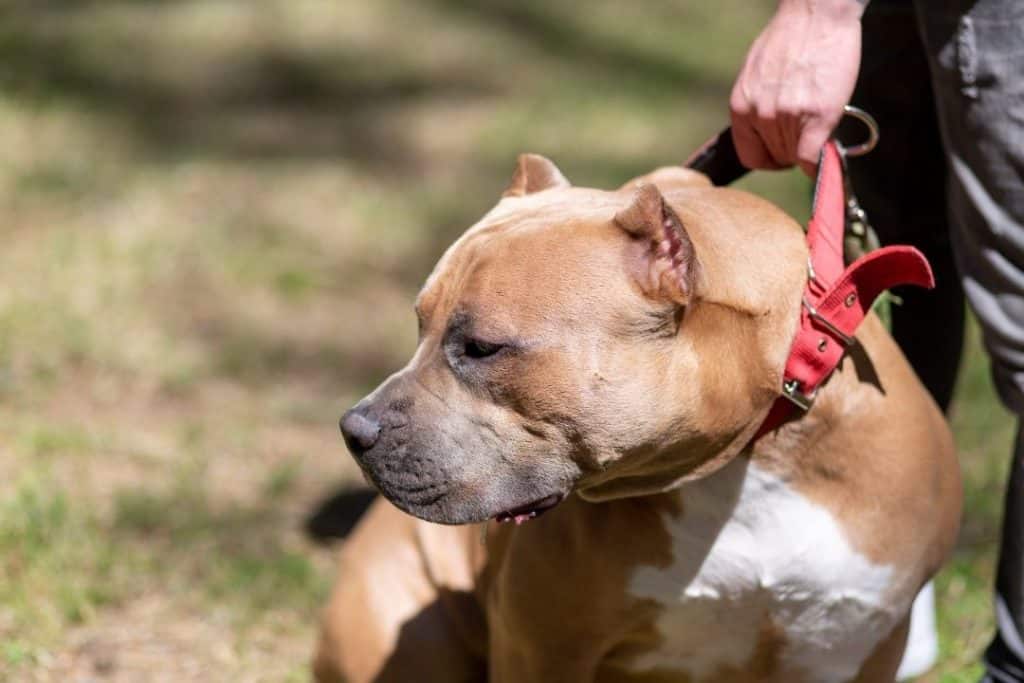This article may contain affiliate links, and I will be compensated if you make a purchase after clicking on my links (at no additional cost to you)
It’s no secret that human foods may not always be suitable for your American Bully. Things like chocolate, macadamia nuts, and ice cream are sure ways to upset your dog’s stomach. But what about rice?
American Bullies can eat rice if it’s cooked, including white and brown varieties. Brown rice is rich in proteins and fibers, which makes it perfect for a long-term diet. White rice is blander, so it’s better for dogs suffering from an upset stomach. That said, some dogs may be allergic to rice.
In this article, I’ll explain how you can tell if your dog is allergic to rice. I’ll also dive deeper into the nutritional differences between white and brown rice so that you can pick the best option for your dog.
Brown vs. White Rice: Which Is Better for My American Bully and Why?
How Rice Is Made
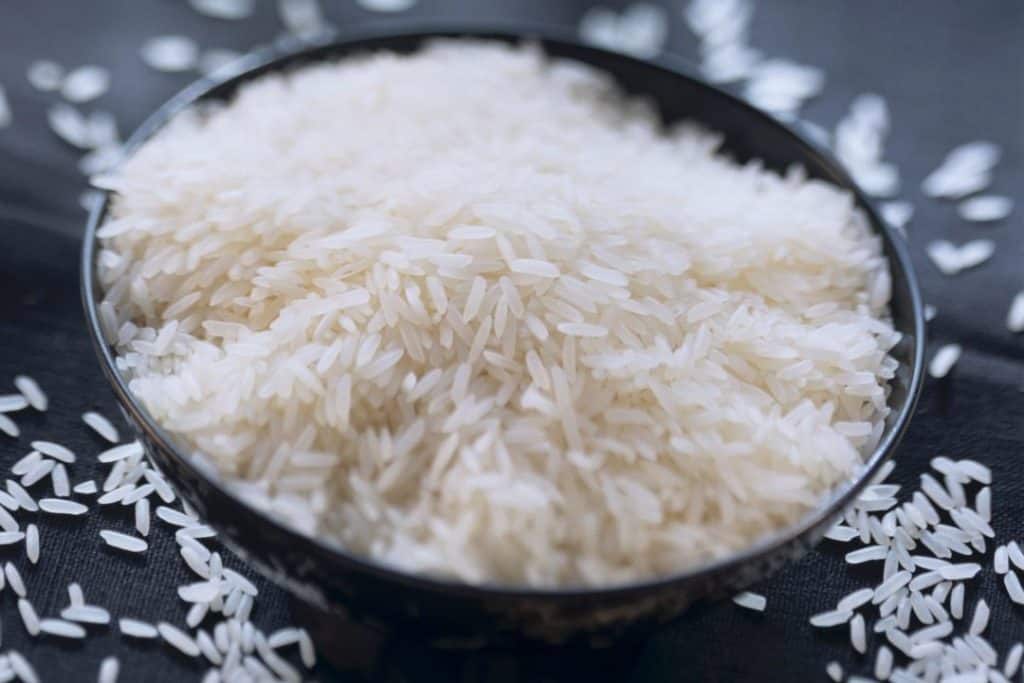
Some people may think that brown and white rice are entirely different crops, but that’s not true. Long story short, white rice is what you get after processing brown rice.
After harvesting, each rice grain consists of four layers:
- Husk (aka hull)
- Bran
- Germ
- The white grain (endosperm)
The husk is always removed right after harvesting because it’s too hard for us to eat. That process yields brown rice. It still looks brown because of the bran and germ, which contain lots of vitamins and minerals.
To turn it into white rice, manufacturers polish and mill brown rice to remove the bran and germ, leaving only the carbohydrate-rich white seed.
Benefits of Brown Rice
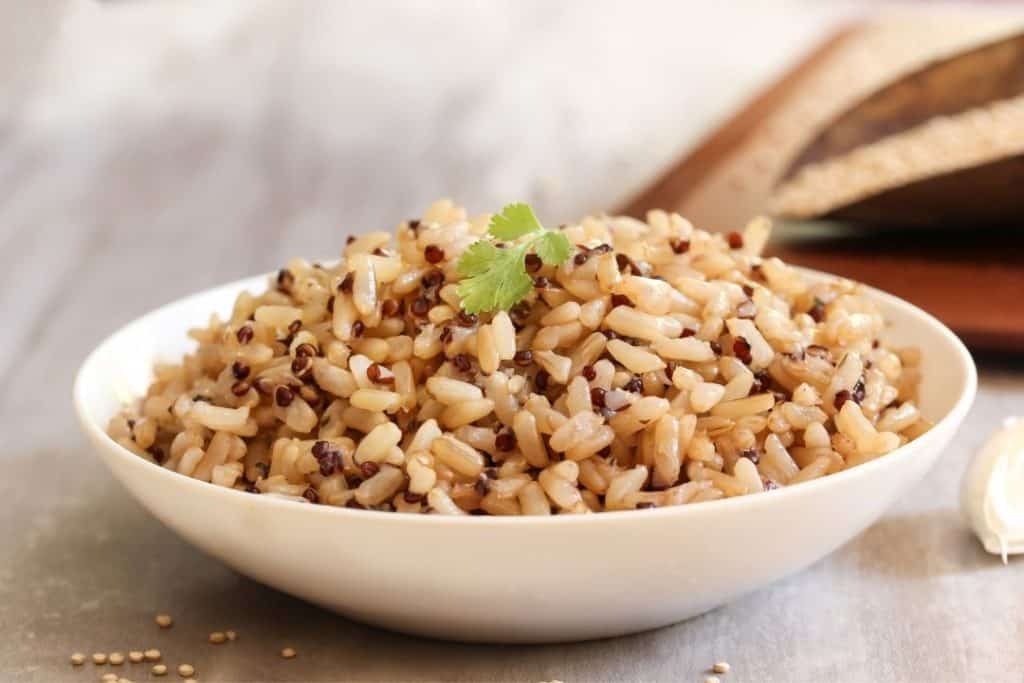
- Rich in manganese: Research proved that manganese is crucial for bone strength and wound healing. It also decreases the risk of diseases that may damage your dog’s muscles and nerves.
- Contains high levels of antioxidants: Simply put, antioxidants protect your dog against a variety of diseases, including diabetes and cancer.
- Useful for obese dogs: If your American Bully has put on a few pounds over the recent lockdown, brown rice can help him lose weight quickly because it’s rich in fibers, which will keep your pooch full for a long time.
- Good for heart health: Although American Bullies don’t typically have heart problems, your dog might be at risk if either of his parents suffered from any heart conditions. Thankfully, brown rice can lower this risk.
- Ideal for diabetic dogs: Diabetic American Bullies can handle brown rice better than the white counterpart. That’s because brown rice breaks down slowly in the stomach, so it doesn’t spike up the blood sugar.
Downsides of Brown Rice
Brown rice has a strong, nutty flavor with a firm, chewy texture. Technically speaking, those attributes are not really bad, but some dogs may just hate them.
Because brown rice is rich in fibers and lots of nutrients, your dog’s stomach also has to work harder and for a longer time to fully digest it. So, if your dog usually suffers from stomach issues, consult your vet before feeding him brown rice.
Benefits of White Rice
- Goes easy on an upset stomach: White rice contains nothing but carbohydrates, which dissolves quickly in the stomach without straining it whatsoever.
- Has a satisfyingly soft texture: The milling process strips the white rice of all the chewy components. That’s ideal for my XL American Bully since he loves to gobble down his food without much chewing.
- It’s more convenient for the owner: White rice cooks faster than the brown counterpart, and it’s also cheaper.
Downsides of White Rice
White rice has a high glycemic index, meaning that it can quickly raise blood sugar levels, which can be dangerous for diabetic dogs.
The American Kennel Club says that you can still give white rice to your diabetic dog if you do it sparingly. However, I think it’s better to seek veterinary advice on that matter — just to be sure.
How Much Rice Can My American Bully Eat?
Because rice is rich in carbs, it can cause your dog to gain weight quickly. So, never depend on rice as the main meal for an extended time.
To know the ideal rice amount that your dog should eat per day, ask your vet — they’ll weigh in factors like your dog’s weight, gender, age, and health status to determine the ideal amount.
How To Know if Your Dog Is Allergic to Rice?
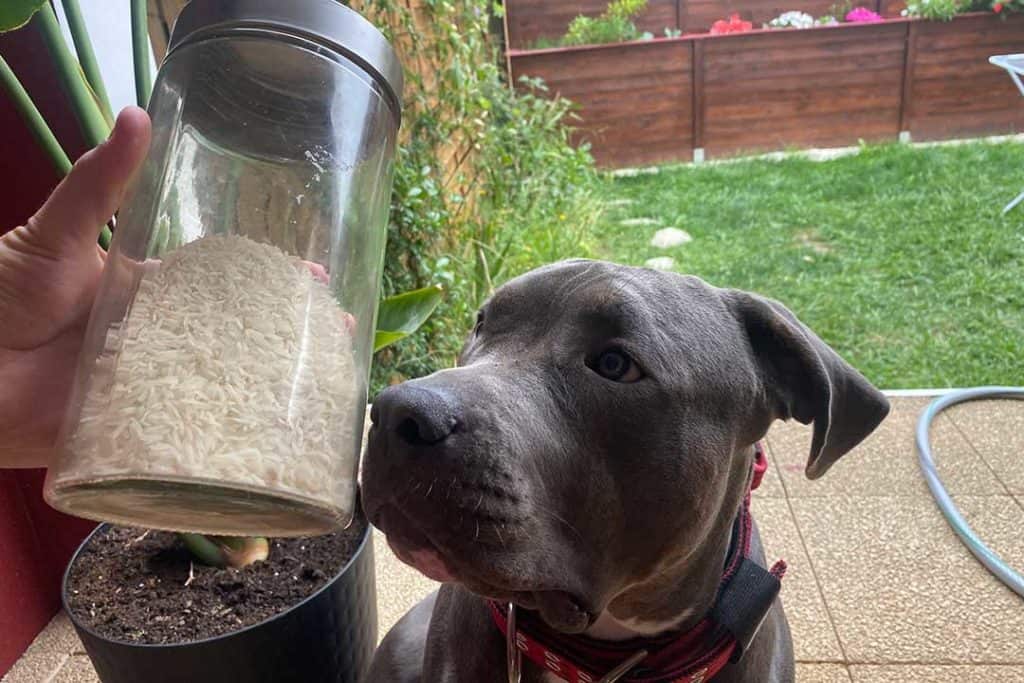
Just like humans, some dogs may be allergic to rice due to genetic reasons. If you find out that your dog is allergic to any foods, he should never eat them, not even in small amounts.
Only the vet can determine whether your dog is allergic to rice or not. That said, you should familiarize yourself with the typical allergic symptoms so that you can take your dog to the vet as soon as the allergic reaction starts.
These symptoms include:
- Biting the bum and tail
- Licking the feet
- Red paw pads
- Diarrhea (loose, watery poop)
- Long-standing ear infection
- Flaky skin
- Loss of appetite
- Decreased physical activity
Can Dogs Become Suddenly Allergic to Rice?
Susan Wynn, a nutritionist at the University of Tennessee College of Veterinary Medicine, says that dogs can suddenly become allergic to any food, even if they’ve been eating it for years.
Naturally, it’ll be hard to pin down the food upsetting your dog in that case. That’s one of the reasons why you should always take your dog for routine checkups. The vet can notice any alarming symptoms before they escalate into something bigger.
The Best Way To Prepare Rice for Your American Bully
If you’re planning to serve rice to your dog, chances are you’ll just share some of the rice you’ve cooked for yourself — but that’s not really ideal.
Why? Well, dogs generally can’t handle the seasonings and spices that you may casually add to rice to improve its bland taste. Some of the no-no seasonings include salt, onions, and garlic.
So, you’d be better off preparing rice separately for your dog.
Now, I’ll share one of my favorite tried-and-tested recipes. I like to cook rice with chicken to enrich the flavor naturally and add some protein, but you can also keep it plain.
Boil Water and Cook the Chicken
Fill a medium pot with water and bring it to a boil. Then, cut the raw chicken into small pieces and throw them in the boiling water. Let them simmer over medium heat.
After about 20 minutes, the chicken should be fully cooked. Remove the pieces from the pot and set them aside for now. Don’t discard the cooking broth.
Pro tip: While the chicken is cooking, use a spoon to skim any fats that rise to the top. Fat is bad for dogs because it overworks their pancreas, which can increase the risk of diabetes.
Cook the Rice in the Chicken Broth
I like to cook the rice in the chicken broth because it gives a delicious flavor.
Start by bringing the broth back to a boil, and then cook the rice for 20 minutes on medium heat. If you’re preparing brown rice, let it simmer for 45 minutes to dial down its rough texture.
Serve Warm
Let the rice cool down before mixing it with the chicken. Remember to shred the chicken pieces with a fork so that your dog won’t have to chew a lot.
Summing Up
American Bullies can eat rice, but they shouldn’t eat it daily to avoid putting on weight.
Most dogs prefer white rice because it’s softer than the brown counterpart. However, brown rice packs way more nutrients.
Remember, your dog might also be allergic to rice, so consult your vet beforehand.
Also see my article about the best american bully dog foods for kibbles recommendation.

I created this blog to share my passion for bullies, and help current and future pitbull owners with things like diet and education.
Hope you find it useful, don’t hesitate to drop a comment on my articles!

